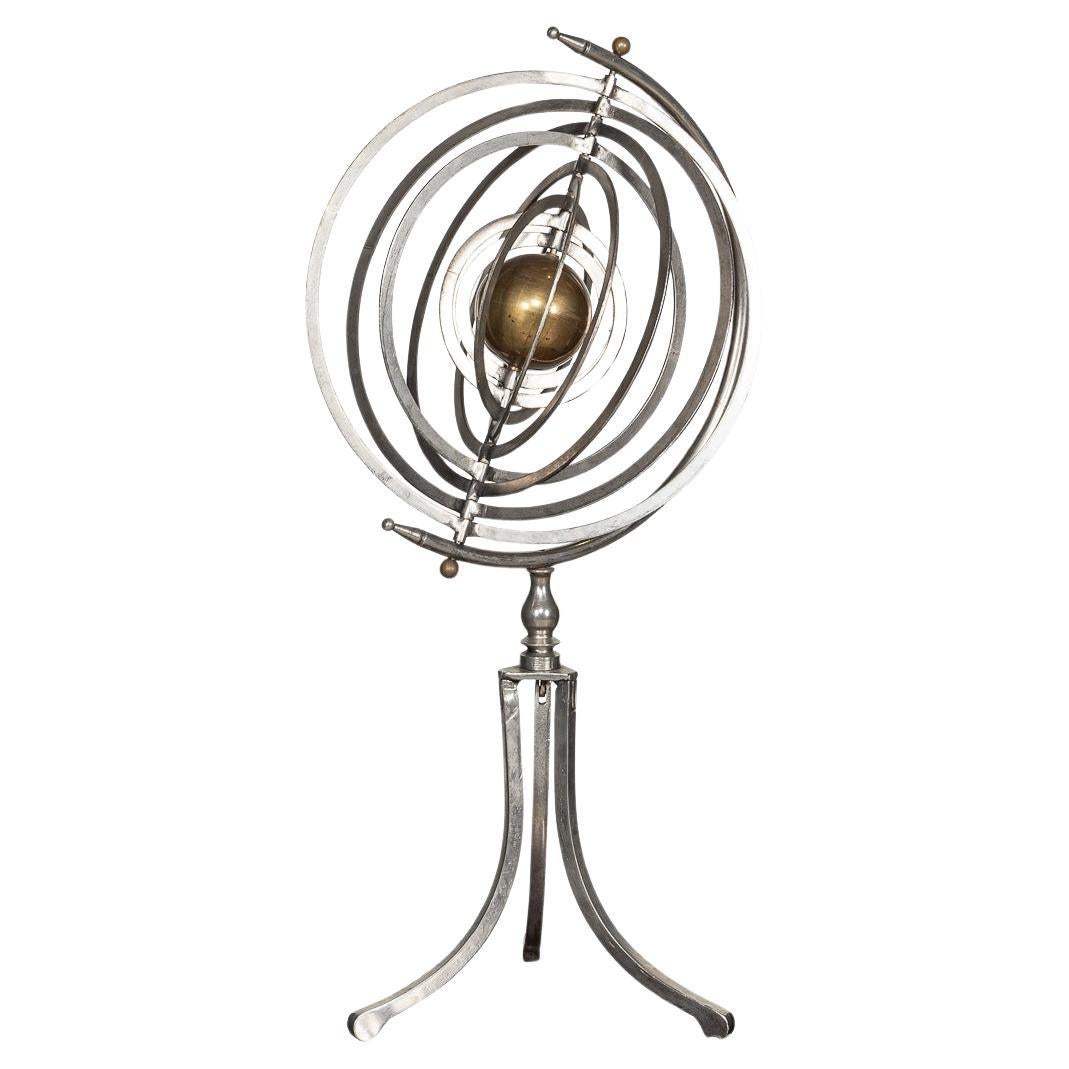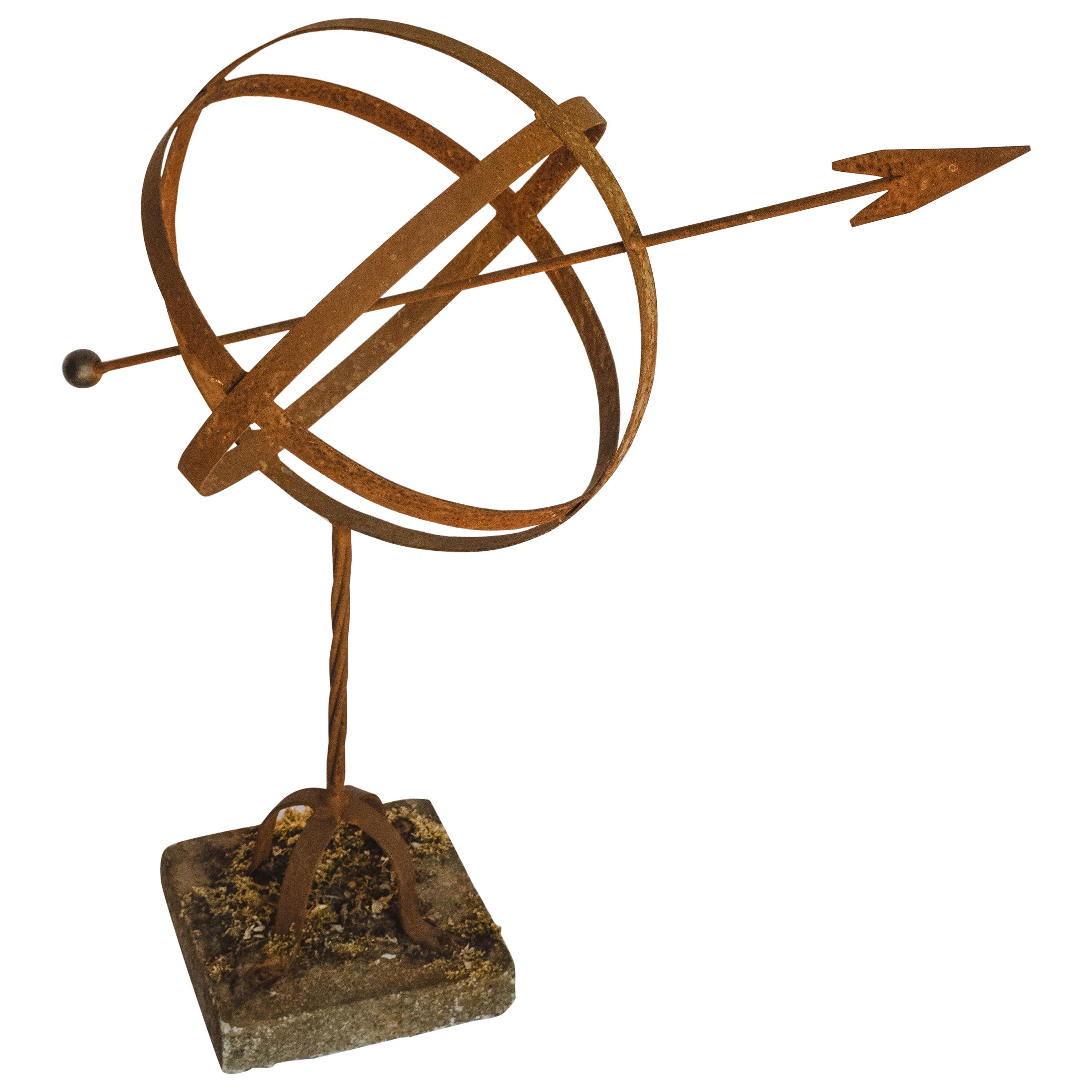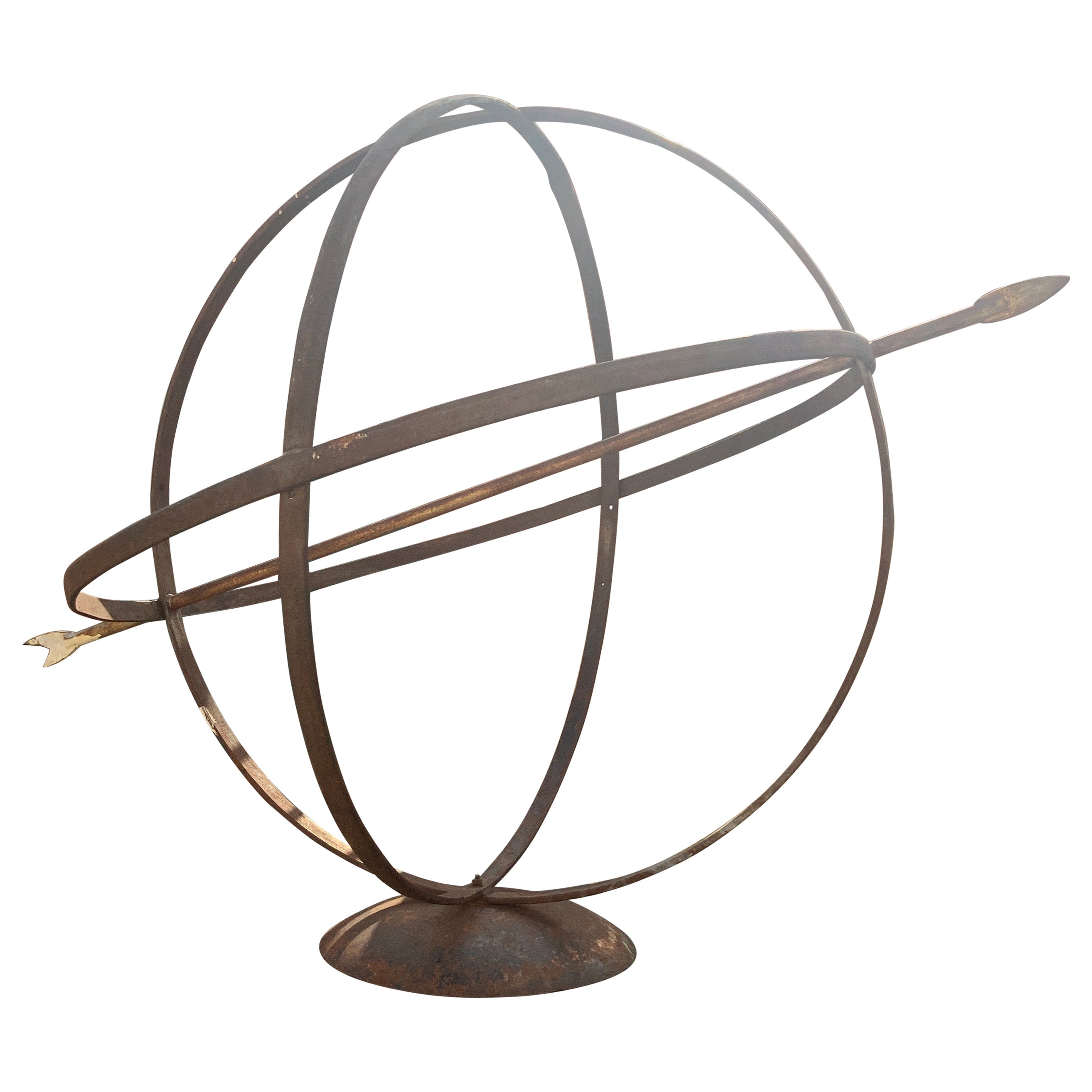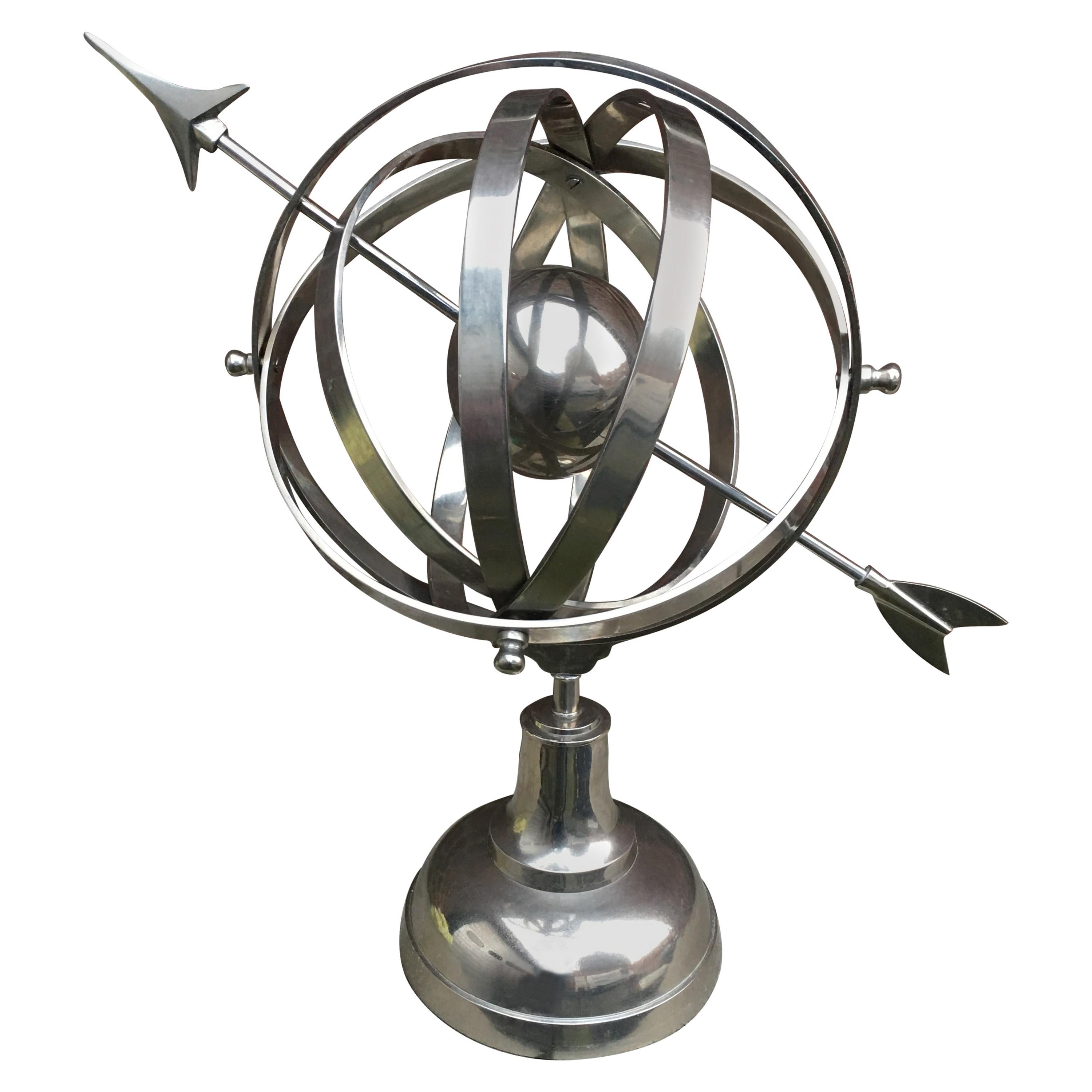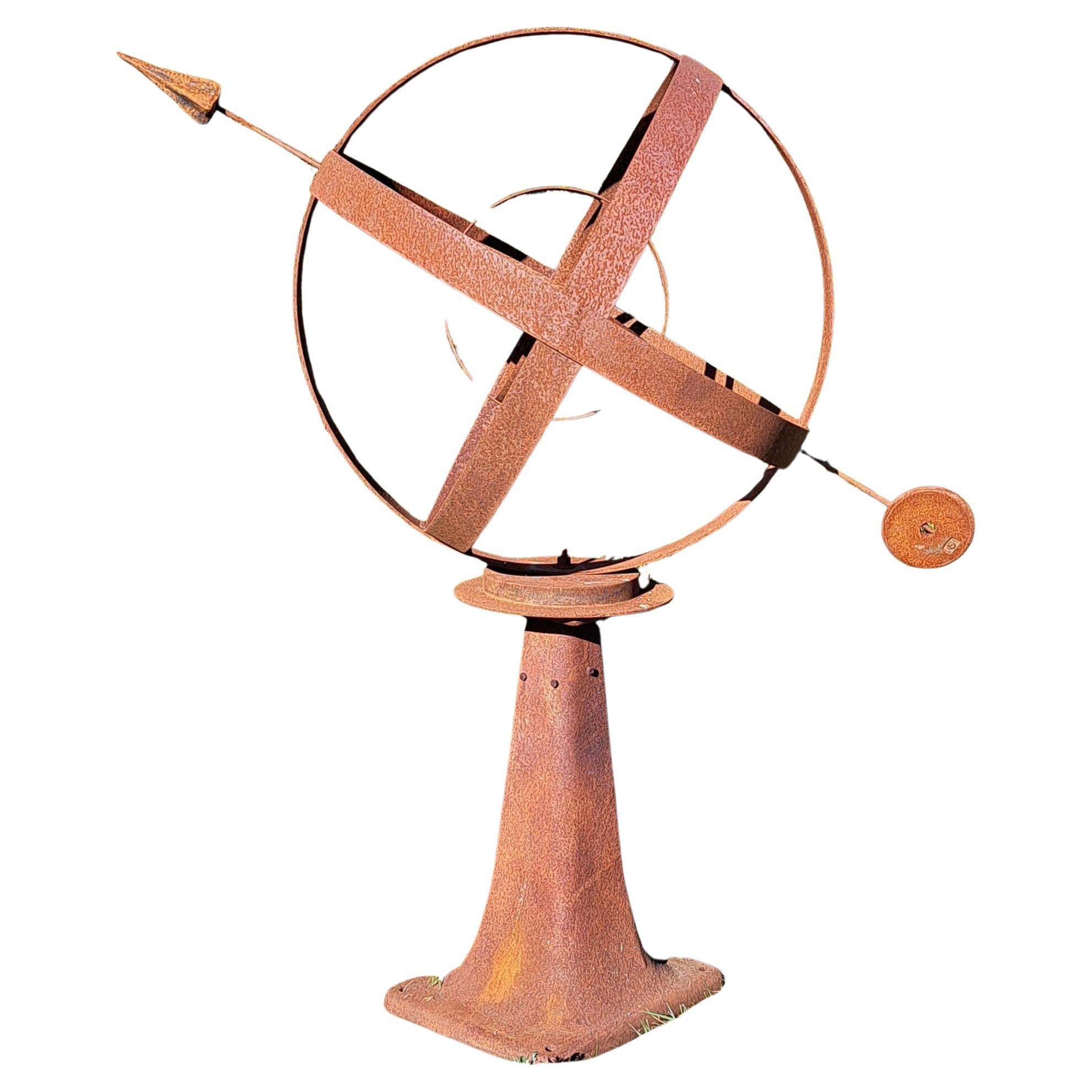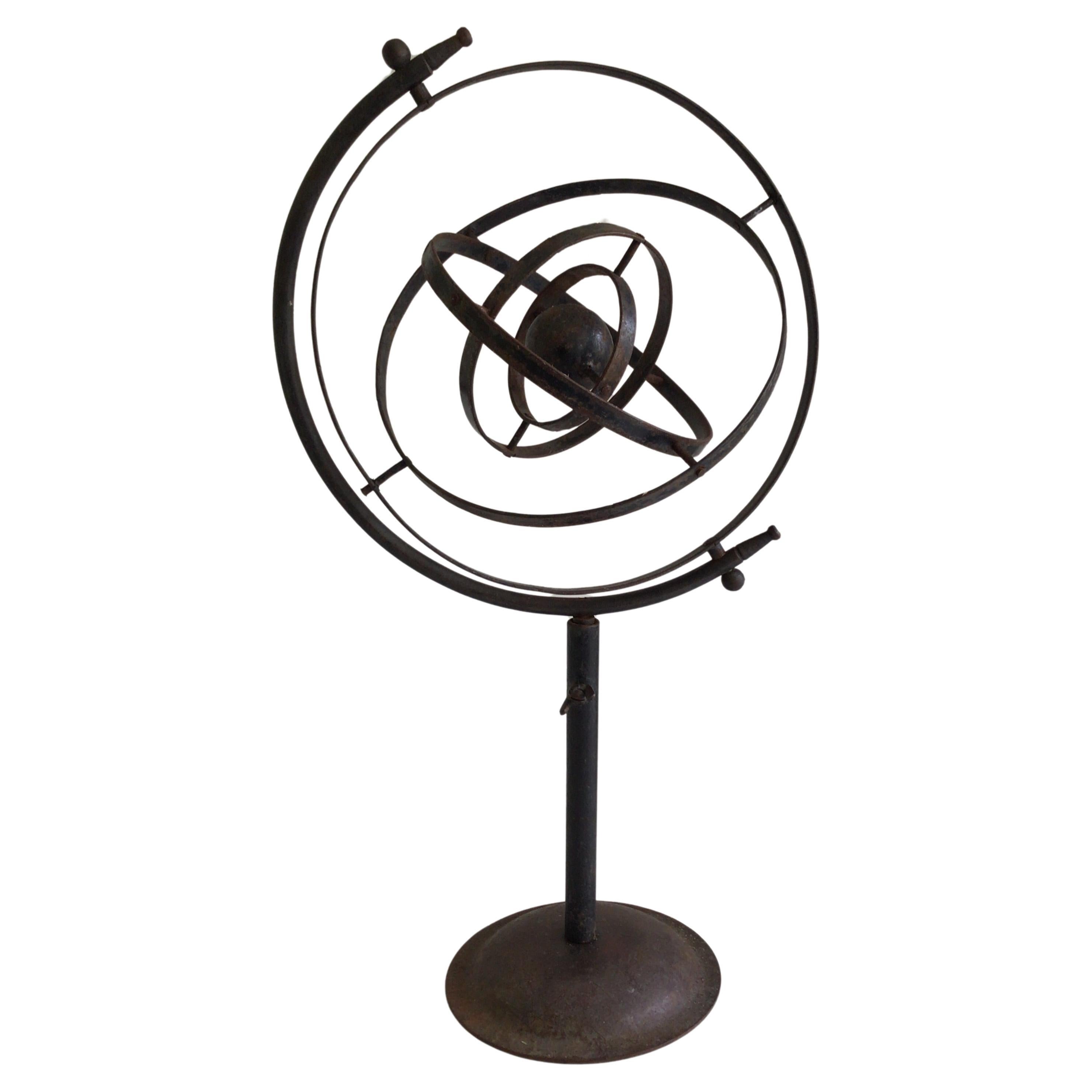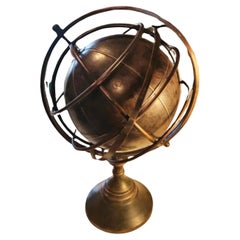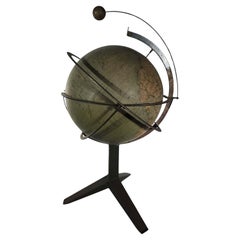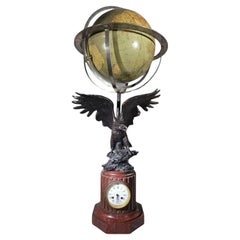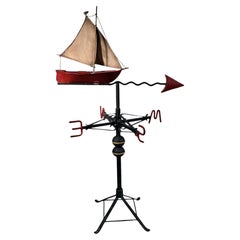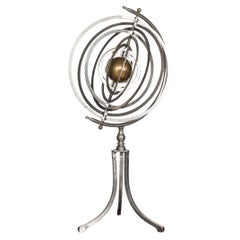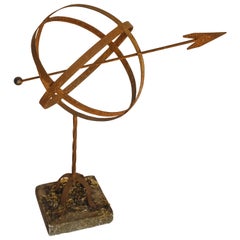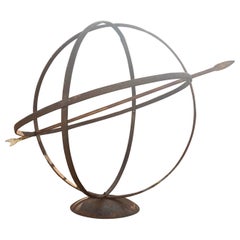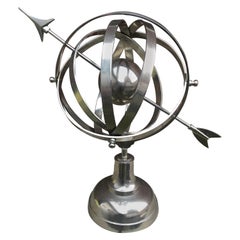Items Similar to Large Silvered Bronze Armillary Sphere – 1950s AND 115 C
Want more images or videos?
Request additional images or videos from the seller
1 of 19
Large Silvered Bronze Armillary Sphere – 1950s AND 115 C
$4,244.59
£3,160.65
€3,580
CA$5,832.29
A$6,527.43
CHF 3,406.82
MX$79,601.05
NOK 43,602.65
SEK 41,275.49
DKK 27,251.41
Shipping
Retrieving quote...The 1stDibs Promise:
Authenticity Guarantee,
Money-Back Guarantee,
24-Hour Cancellation
About the Item
This impressive, large armillary sphere from the 1950s is a beautiful representation of celestial design, crafted from silvered bronze with intricate hand-engraved zodiac symbols. Standing at 115 cm tall, this armillary sphere is not only a striking decorative piece but also a timeless symbol of exploration and the cosmos.
The expertly engraved zodiac signs add a layer of elegance and craftsmanship, making it an ideal centerpiece for a study, library, or garden. With its vintage silvered finish and durable bronze construction, this armillary sphere is in good overall condition, offering both aesthetic appeal and historical charm.
Dimensions:
Height: 115 cm
Width: 100 cm
Depth: 60 cm
Key Features:
Vintage Silvered Bronze: Constructed in the 1950s, crafted from high-quality bronze with a unique silvered finish.
Hand-Engraved Zodiac Symbols: Detailed zodiac engravings that showcase fine craftsmanship and add celestial charm.
Grand Scale: Standing at 115 cm, it’s a substantial piece ideal for both indoor and outdoor settings.
Timeless Design: A perfect blend of artistic and scientific history, evoking the curiosity of ancient astronomers.
Good Condition: Well-maintained, with light vintage wear that enhances its classic appeal.
Ideal for collectors, astronomy enthusiasts, or those seeking a distinctive statement piece, this armillary sphere brings a sense of wonder and history to any decor style.
Why Choose This Armillary Sphere?
Striking size and craftsmanship, capturing the elegance of mid-20th-century design.
Hand-engraved zodiac symbols for added uniqueness and artistic value.
Versatile for various settings, from gardens to libraries or studies.
Bring the beauty of the cosmos to your space with this extraordinary armillary sphere, a symbol of timeless exploration.
About the Seller
4.8
Platinum Seller
Premium sellers with a 4.7+ rating and 24-hour response times
Established in 2005
1stDibs seller since 2021
362 sales on 1stDibs
Typical response time: 1 hour
- ShippingRetrieving quote...Shipping from: Madrid, Spain
- Return Policy
Authenticity Guarantee
In the unlikely event there’s an issue with an item’s authenticity, contact us within 1 year for a full refund. DetailsMoney-Back Guarantee
If your item is not as described, is damaged in transit, or does not arrive, contact us within 7 days for a full refund. Details24-Hour Cancellation
You have a 24-hour grace period in which to reconsider your purchase, with no questions asked.Vetted Professional Sellers
Our world-class sellers must adhere to strict standards for service and quality, maintaining the integrity of our listings.Price-Match Guarantee
If you find that a seller listed the same item for a lower price elsewhere, we’ll match it.Trusted Global Delivery
Our best-in-class carrier network provides specialized shipping options worldwide, including custom delivery.More From This Seller
View AllRare English Nautical Globe with Armillary Sphere (1930) 20th Century
Located in Madrid, ES
Rare English Nautical Globe with Armillary Sphere (1930) 20th Century
Good condition
magnificent globe, with a leather-covered wooden interior terrest...
Category
Early 20th Century English Modern Nautical Objects
Materials
Metal
$1,422 Sale Price
20% Off
Antique Orrery – Tellurium by Paravia, Torino (1900, Italy)
Located in Madrid, ES
Rare and collectible orrery (tellurium) produced by the renowned Italian maker Paravia, Torino in 1900. This finely crafted planetary model illustrates the Earth-Sun-Moon system, dem...
Category
Early 20th Century Scientific Instruments
Materials
Paper
19th-Century French Clock with Globe and Bronze Eagle 100 CM
Located in Madrid, ES
19th-Century French Clock with Globe and Bronze Eagle
Magnificent 19th-century French clock, featuring a marble base and an impressive bronze eagle....
Category
Antique 1890s Mantel Clocks
Materials
Bronze
1950s Spanish Metal Weathervane – Decorative Vintage Piece
Located in Madrid, ES
A charming and decorative Spanish weathervane from the 1950s, crafted from painted metal. This vintage piece features a classic design, making it an excellent addition to gardens, ro...
Category
Vintage 1950s Garden Ornaments
Materials
Metal
French Planetary Clock InGided Brass And Marble Planetarium Tellurium
Located in Madrid, ES
French Planetary Clock In Golden Brass And Tellurium Marble, Planetarium
Rare French planetary from the 19th century in brass and Royal Red marble base...
Category
Antique Late 19th Century Scientific Instruments
Materials
Marble
$17,765 Sale Price
20% Off
Terrestrial Globe Ludwig Julius Heymann, Circa 1880
Located in Madrid, ES
Terrestrial Globe Ludwig Julius Heymann, Circa 1880
Globe 10 cm in diameter with a marble base held by metal putty. Nineteenth century. Dimensions: 46 cm high 7.14 cm diameter
Category
Antique 1880s Scientific Instruments
Materials
Marble
$1,252 Sale Price
20% Off
You May Also Like
20th Century Steel & Brass Copernican Armillary Sphere c.1930
Located in Royal Tunbridge Wells, Kent
A 20th Century Copernican Armillary Sphere crafted in polished steel and brass. This instrument illustrates the celestial motion of the solar system, with origins tracing back to anc...
Category
20th Century European Other Scientific Instruments
Materials
Brass, Steel
Armillary Sphere
Located in Houston, TX
This armillary sphere is made of metal and has a rust color finish. It is mounted on a small concrete square. As a conversation piece or as an additio...
Category
Early 20th Century European Mounted Objects
Materials
Concrete, Metal
$1,750
Mid Century Iron Armillary Sphere
Located in Dallas, TX
Simple yet stunning very large armillary sphere pierced with an arrow; Iron with bronze finish.
Category
21st Century and Contemporary French Garden Ornaments
Materials
Iron
Nickel-Plated Armilary Sphere
Located in Saint-Ouen, FR
Nickel-plated armilary sphere, circa 1960.
Category
Vintage 1960s European Mid-Century Modern Abstract Sculptures
Materials
Nickel
Large Garden Armillary Garden Sphere
Located in Newtown, CT
Large Garden Armillary with oxidized finish. It is 64" wide at the arrow x 36" deep x 68" high. Statement piece for any garden.
Category
Early 2000s Industrial Sundials
Materials
Iron
1950s Iron Armillary or Rotating Sphere on Metal Base
Located in Tarrytown, NY
1950s Iron Rotating Sphere or Armillary
Height not adjustable
Category
Vintage 1950s Garden Ornaments
Materials
Iron
More Ways To Browse
Silver Sphere
Large Bronze Centerpiece
Vintage Zodiac
Vintage Zodiac Charm
Celestial Sphere
Folk Art Mushroom Specimens
George Iii Barometer
Human Brain
Postal Scale
Antique Brass Microscopes
Black Forest Barometer
Large Bellows
Molecular Model
Antique Butcher Collectibles
Antique Counter Scale
Antique Wheel Barrel
Jewelers Scale
Opera Lorgnette
